Final Project - Hanging Conversations
Circular knitting machine, Smoothcast, wood, lasercutter, vinylcutter, phototransistors, LEDs
Setup
Two hanging scales made from knit wool tubes that have stretch sensors knit into the structure (to measure weight/pull). The scales have composite containers for objects to be placed within them. They are strung from a wooden rig that doubles as the platform for the communication circuit. The composite is cast around a balloon using Smoothcast310. See illustration. An opening cut into each of these ballon shapes invides people to place items within. Once both hangings recognise that they are weighted (they communicate this with eachother) they begin to comunicate about how heavy each of these items are. The goal is for them both to know which of them carries the heaviest item and then to make this clear to the audiance.
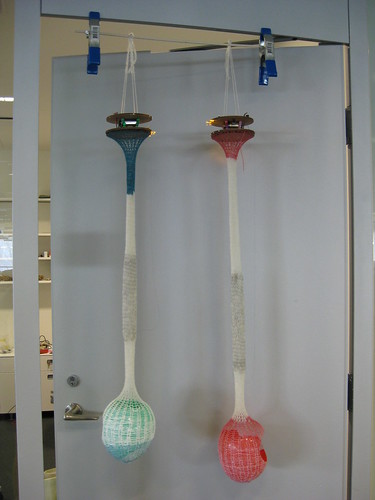


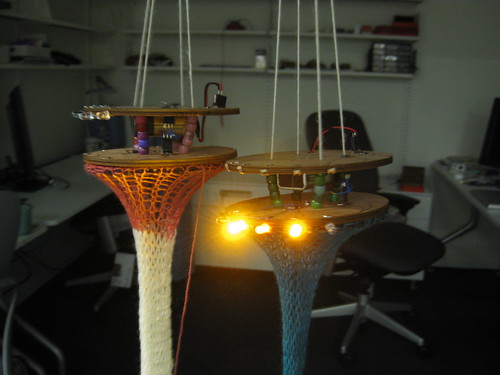
List of things to do
- Knit tubes, including stretch sensors
- Cast part of tube in resin and shape around balloon
- Circuit layout using Illustrator and Cad.py
- Lasercut wooden circles, etch circuit trance
- Vinylcut copper foil for circuit and transfer to wood
- Solder components to vinyl circult
- Isolate leads to stretch sensor with beads
- Hang scales in a way that they can be adjusted to be level
- Test communication protocol with Arduino setup
- Implement communication protocol on AT45
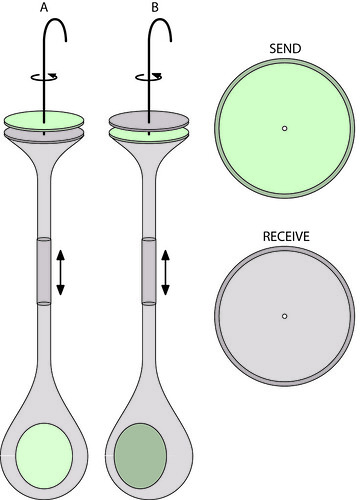
Materials
- Wool for knitting
- Smoothcast 326 or 310 fast-cast resin PDF
- 4mm plywood
- String for suspending
- 100/2 conductive yarn with innox steel fibre, available from Schoeller
- 117/17 2ply silverized nylon conductive thread from LessEMF or Sparkfun
- Plastic/glass beads
- Copper foil for circuit
- 9V batteries
- phototransistors
- Through-hole LEDs
- Optional: Potemtiometer for setting light sensititvity threshold (not implemented yet)
- Optional: On/off power switch (plug in and out battery)
Tools
- Singer circular knitting machine, for roughly 20$ from Amazon
- Lasercutter
- Vinylcutter
- Soldering iron
- Arduinos for testing the rules of communication
Sketches
Circuit Layout
Since the inital design of the ciruit changes were made: LEDs were reduced to three and each was connected to a seperate pin. 390 Ohm resistors were added to each LED as well as to the photoresistors. B circuit was modified to take the same pin inputs as A (originally LED and phototransistors were switched because of circuit design).

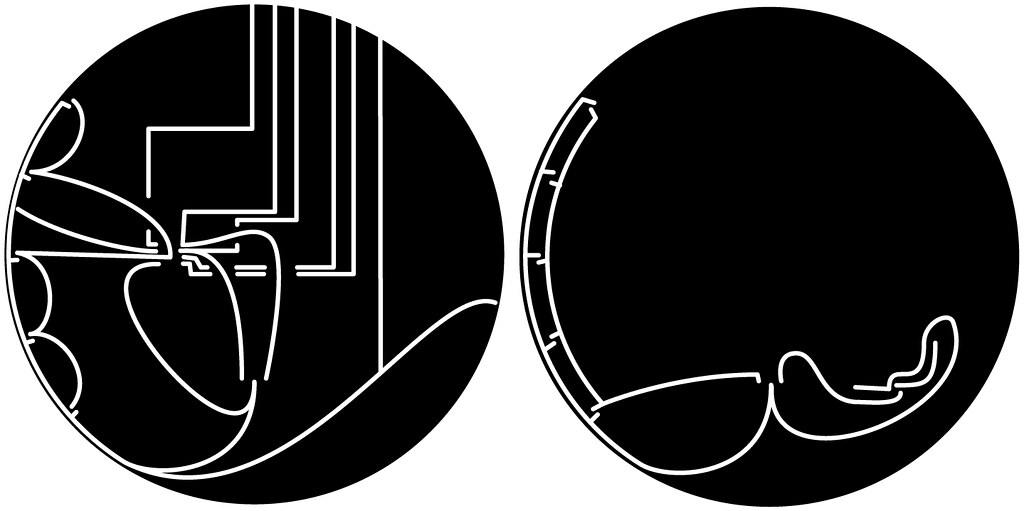
Making-of
Testing phototransistors, some notes: connecting the phototransistors in series gives a range from 1000 down to 800/900 when light is shone on all or one. In paralell the range went from 900 down to 50 when light is shone on all or one, thus paralell works best. The green side goes to analog input, non-green side goes to GND, with the internal pull-up going to 5V.


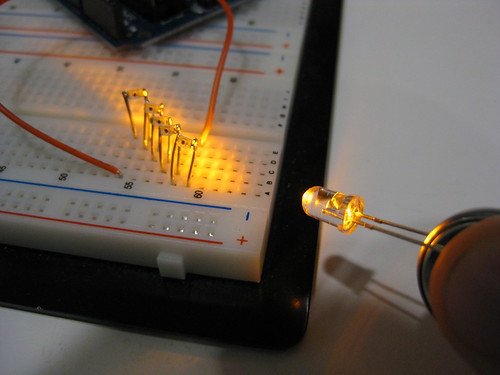
Assembly
Lasercutting and etching circuitboards from plywood.
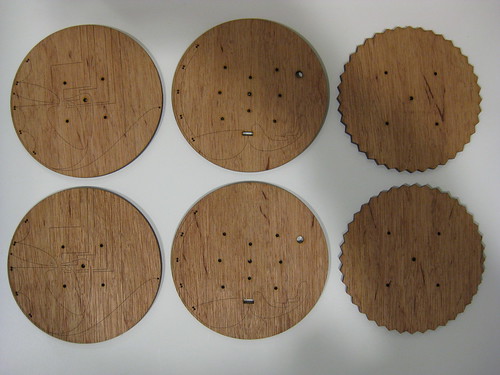

Conductive paint did not loos so good on the wood, so i used copper foil instead.

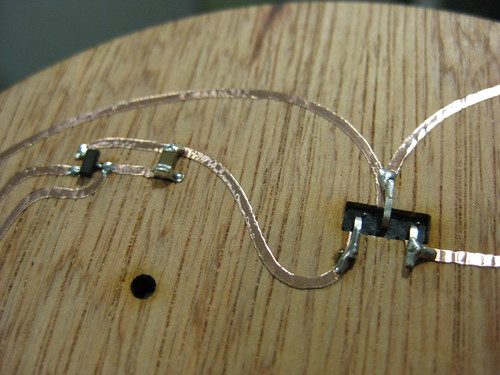

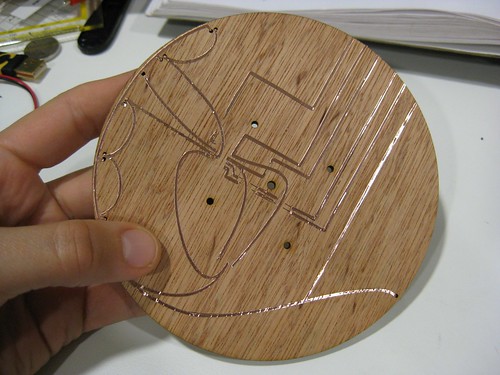
Mounting components along the rim.

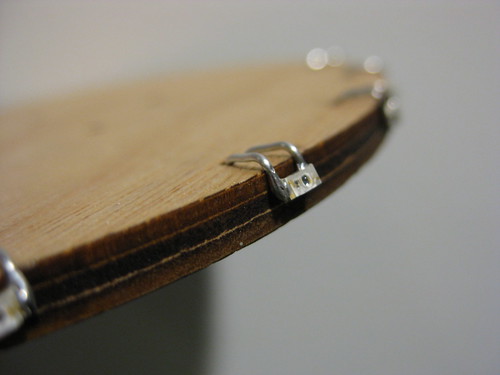
Isolating and jumping traces
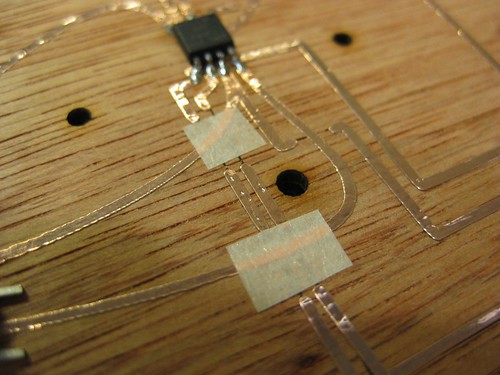
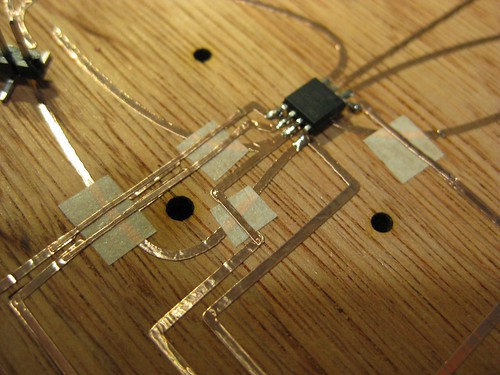
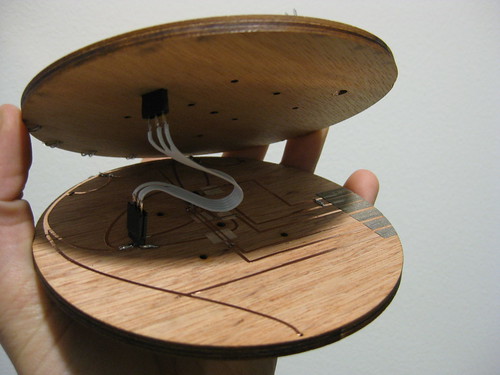

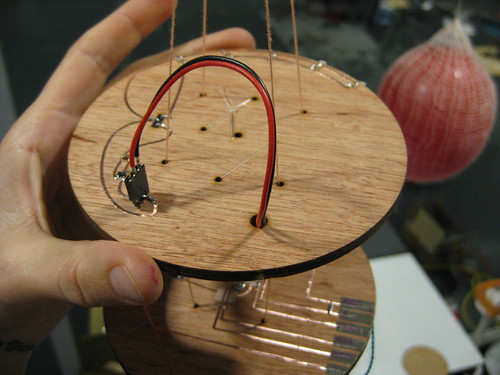

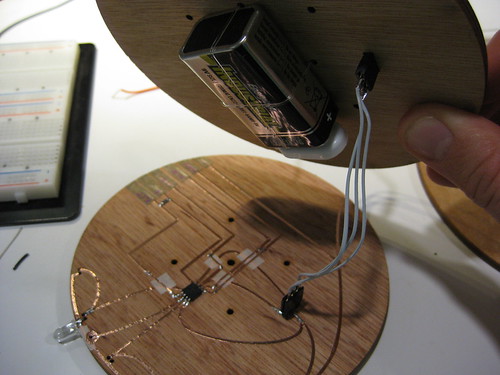
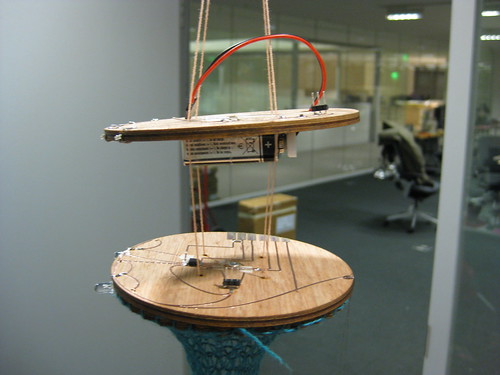
Compositing structure
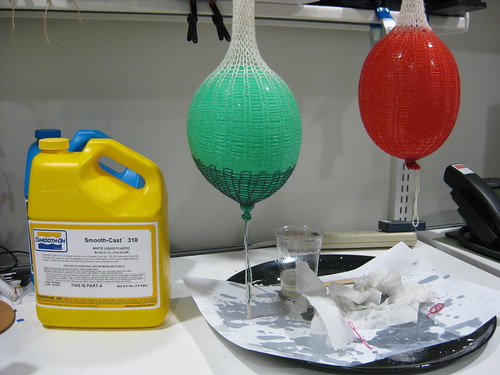
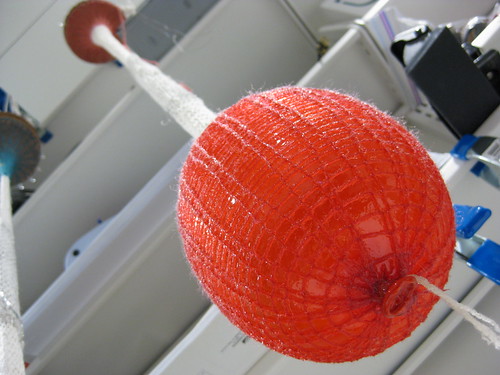


Programming AT45
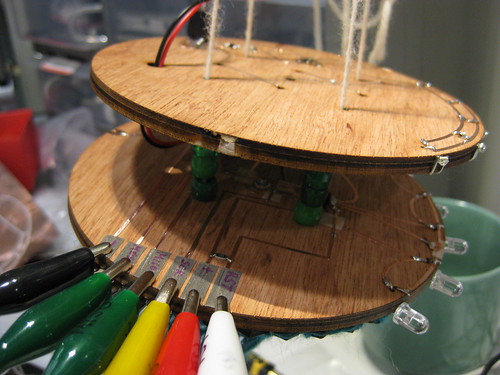
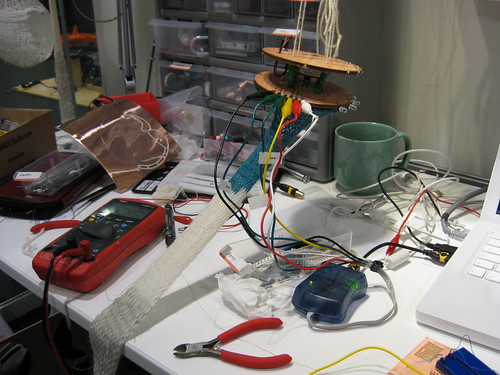
Videos
Coming soon...
RULES OF COMMUNICATION
Example:
A regesters an object that is 130 units heavy. A begins to blink at 1 second intervals (1 second on, 1 second off...). B regesters A's blinking. B regesters an object that is 762 units heavy and blinks three times at 1 second intervals to signal it has an object. A stops continuous blinking. Both A and B assign themselves random waiting times (example: A = 2400ms, B = 5600ms) before beginning to signal their weight. Whoevers waiting time is shorter gets to begin first. A begins to signal the number of hundred units it has after 2.4 seconds and thus begins the converstaion. B regesters A's object weight and compares it to its own. Since B's weight is obviously heavier it can announce itself the "winner" without communicating it's exact weight to A. To announce it has "won", B blinks a certain sequence.
--> If B had obviously less weight than A, it would signal A that it was so, A would then signal the "winning" blink sequence.
--> If B had the same amount of 100 units then it would signal this back to A and they would contine to compare 10 units.
If an item is removed from either A or B or their weight shifts significantly during conversation then they will signal this to eachother and the conversation will begin anew.
Downloads
>> Download Adobe Illustrator file that contains circuits and sketches
>> Download PNG file for vinylcutter
>> Download C program and make file